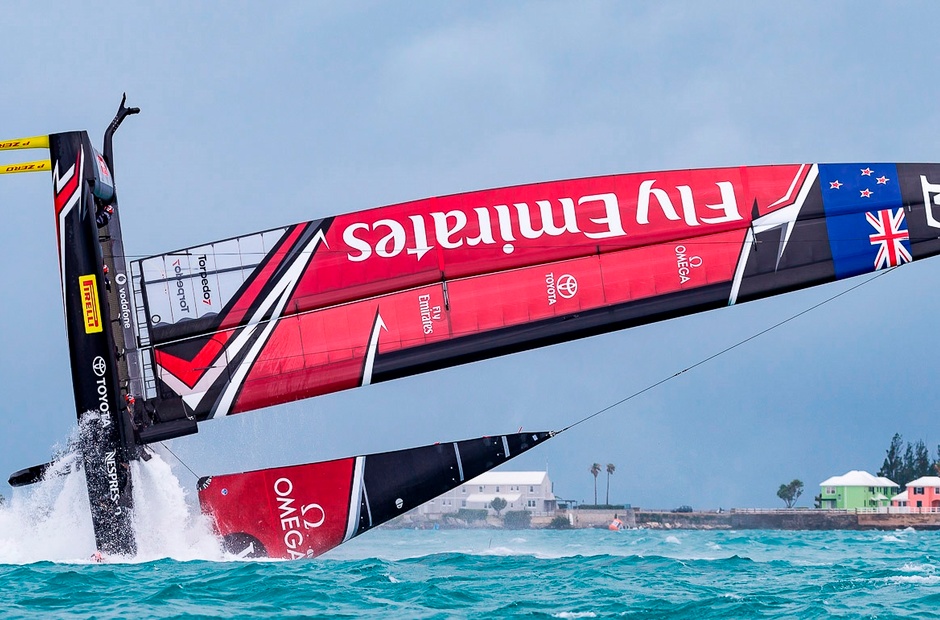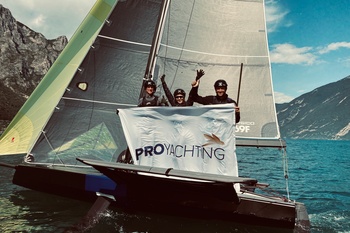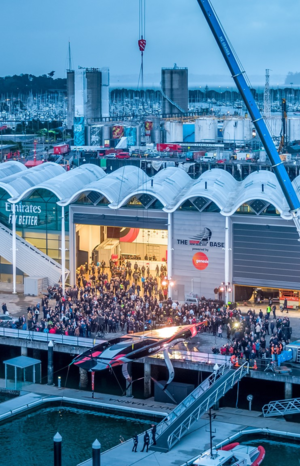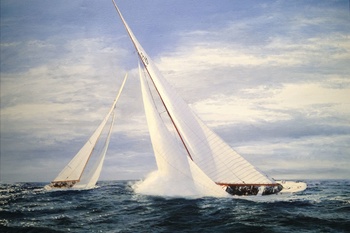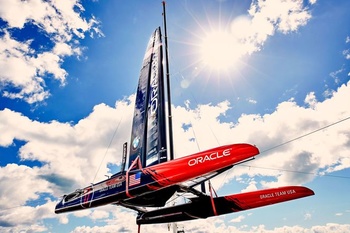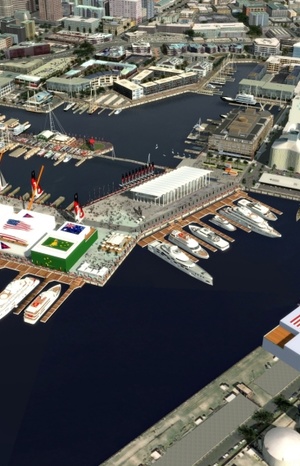This year the Emirates Team New Zealand crew won the «America»'s Cup. However, things could have turned out quite differently if at least one event had happened differently after their epic tipping over at the pre-final semifinals. Here's a translation of an article by onboard reporter Amory Ross about how the entire kiwi team, including the cooks, fought to ensure the boat could continue the competition.
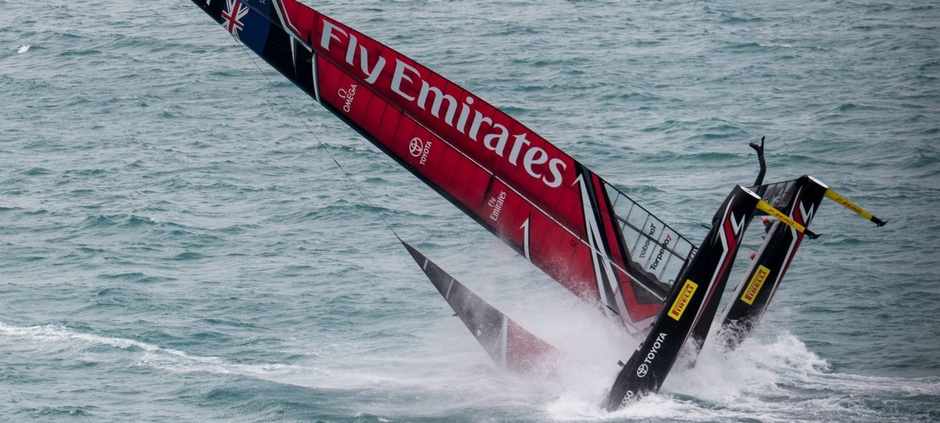
A huge live audience of the 35th «America»'s Cup witnessed a dramatic pitchfloor - a nose job for Emirates Team New Zealand. But when the cameras disappeared and the damaged boat was taken to the tent for damage assessment, the small team, which had very little time and resources, had to join forces to save the campaign. This is the story of the next 48 hours, which was left behind.
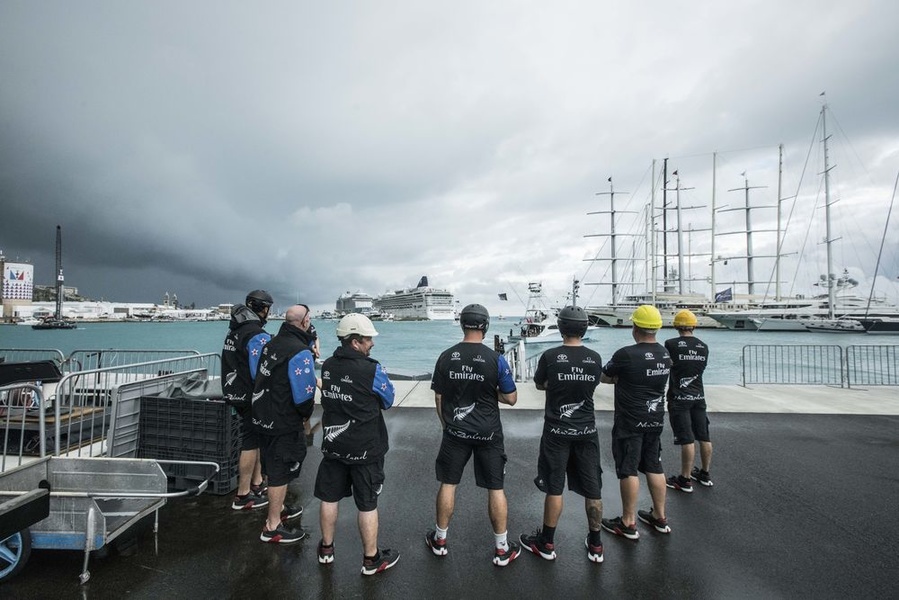
As at the end of any competition day in Bermuda, shipbuilders and engineers stood ready waiting for their AC50 trimaran to be lifted from the water. Only this time, the day was still in full swing and there was a lot of tension in the air. After all, the crew now gathered shoulder to shoulder, not knowing when or how the Aotearoa would return to base after tipping over at the pre-final of Louis Vuitton America's Cup World Series semi-finals.
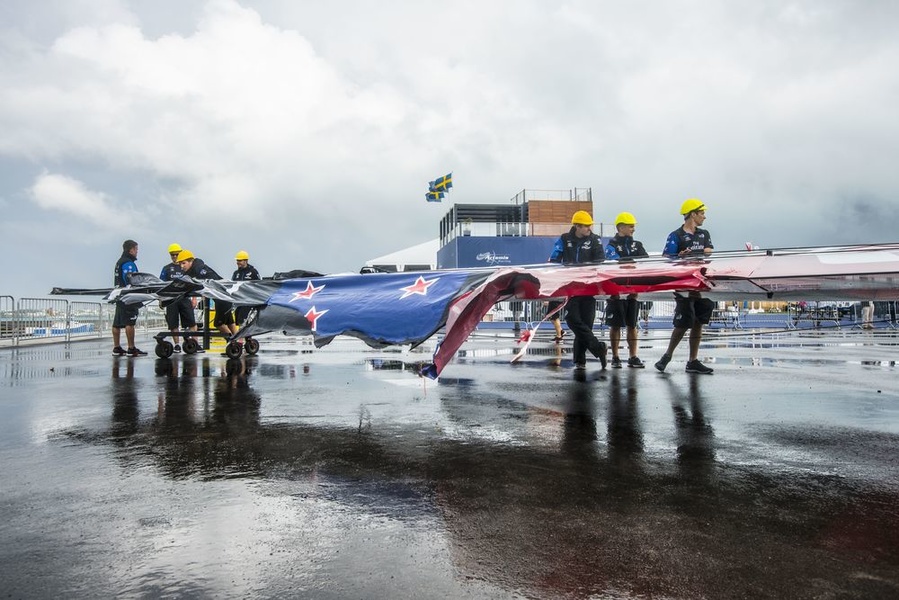
Everyone sighed a sigh of relief as the trimaran was lifted ashore and rolled into the temporary dock. But the obvious damage done to the sail-wing could not be ignored.
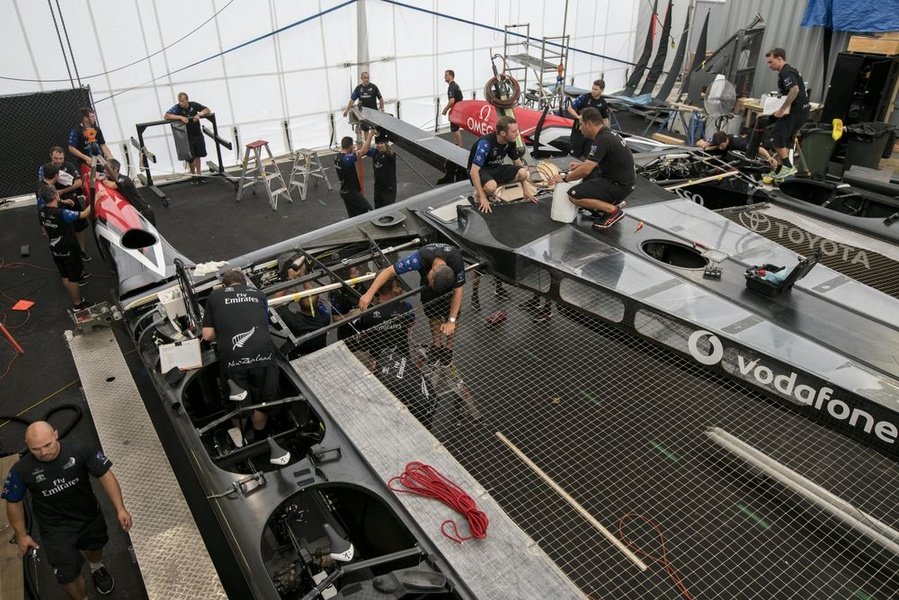
The boat garage turned into a triple station when the team started to assess the damage and the amount of time it would take to get the boat back on the water for two races the next day.
Tools fly up and down. An anxious roar, too loud for a comfortable environment, breaks through the thin walls of our media container. Head of Public Relations Hamish Hooper and I are developing a strategy on how best to tell the world the story we just got into.
It was noon, and the whole team got together to replace the damaged wing before the competition. The boat returned to the course in less than an hour, just in time for the first race of the day (which they won, by the way).
We had not yet had time to get out of our container to watch the race on TV with the rest of the shore team as we heard howling. Hooper came up to the wall to find out what had happened. When he opened the partition, he looked at it, closed it, stepped back and said:
«We just made a pitch floor».
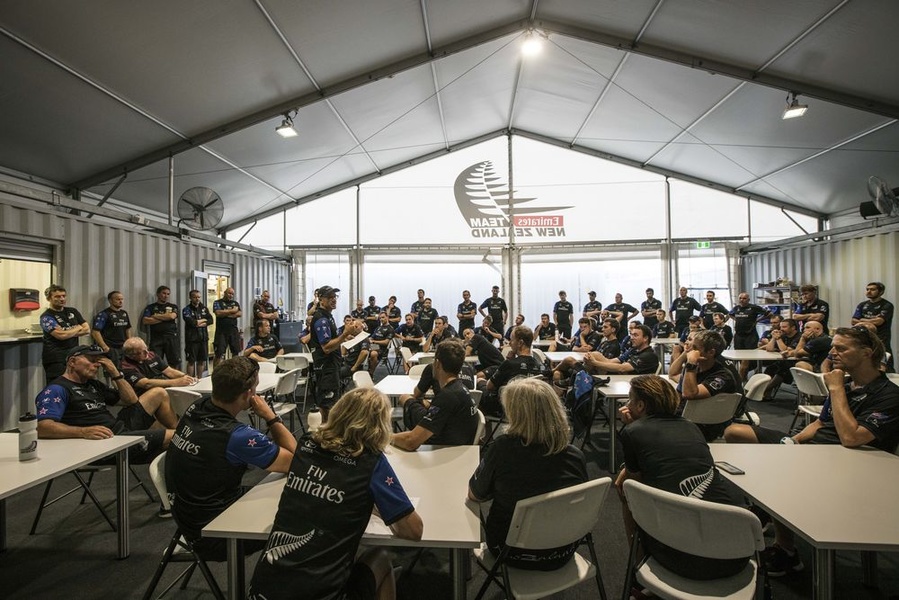
And that's it. We both went downstairs and got straight to work. It's the kiwi way: they're just trying to get into trouble.
When the boat finally returned to the tent, it was commanded to «stop working» and get everyone together. The team's chief operating officer, Kevin Shoebridge, outlined what had to be done.
Right there in the dining room of the team all came together and each of us was well aware of the importance of his role, no matter how big it was.
In a small group of people who had already gone through many obstacles, there was an atmosphere of calm and confidence in their abilities.
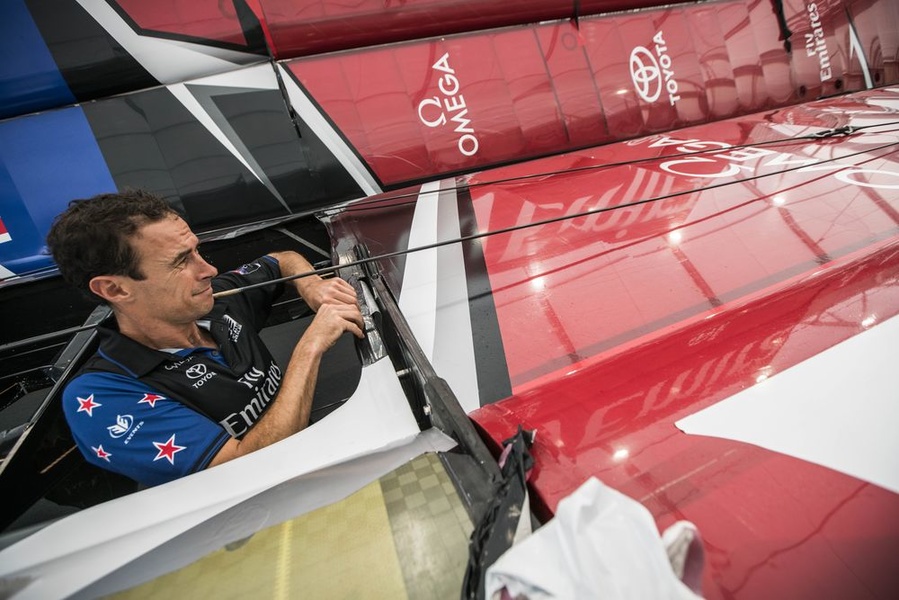
The garage, filled with tools and people, was buzzing all night long. The procedures were almost as standard as the ones after each race, only requiring 10 times more effort.
The daunting task of managing the repair process lay on the shoulders of shipbuilder Sean Regan, head of the onshore team.
The design engineers checked the hull and wing for integrity, as hidden damage is the greatest danger. Brigades of electricians and hydraulics specialists investigated the damage as far as possible while the boat was unwittingly lying in its «cradle».
Sailmasters dismantled the torn wing, while shipbuilders gathered around the fairings to assess what survived and what could be repaired.

The yachtsmen, who were less skilled in shipbuilding, cleaned the garbage, sweeped the floors all night and helped where extra hands or physical strength was needed.
Most designers would hold hair dryers and direct fans to speed up the drying process.
Between meals for the team, kitchen staff would go out on the battlefield, performing tasks on an equal footing with everyone else.
The administrative staff would serve coffee and raise morale until sunrise.
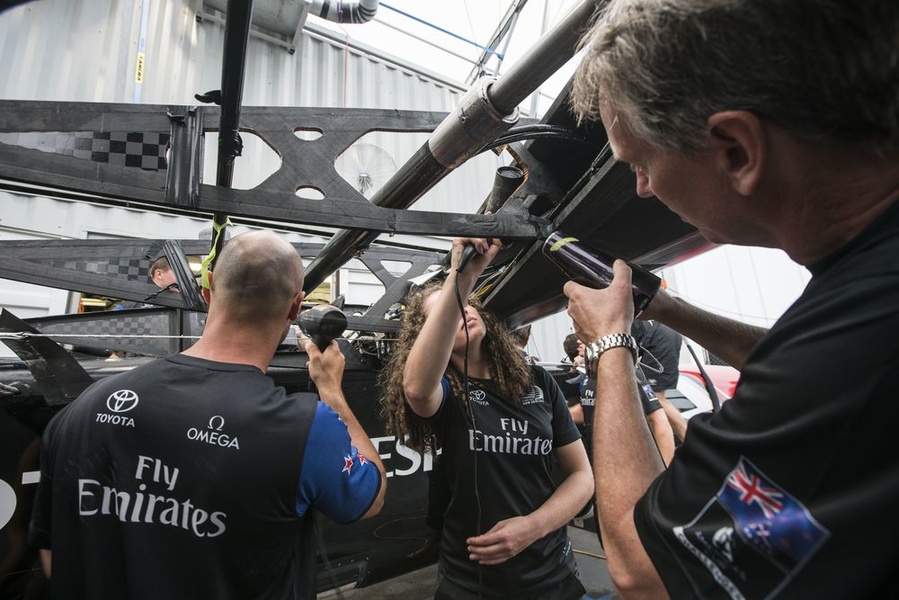
The scene at 2:30 a.m. did not differ from the previous or the next few hours. The team, divided into day, night and morning shifts, ensured constant attention on the court.
The boat was as if connected to the life support system. Hoses were continuously moved over the hulls to dry and dry all parts and electronics, the performance of which had not been known until now.
The first generation replacement frame received an updated fairing, heavier than the previous one, but still suitable.

The boat hangar was opened for the first time on the day when it was confirmed that Aotearoa was completely «healthy». For the casual observer, there was little evidence of the ordeals she had endured.
The damaged fairings had been repaired and disguised as fresh paint or heat shrink material. The electrical and hydraulic elements under the hood that are necessary for swimming have been dried, cleaned and replaced. The appearance of the boat did not indicate the extent of its damage or the amount of effort applied to repair it.
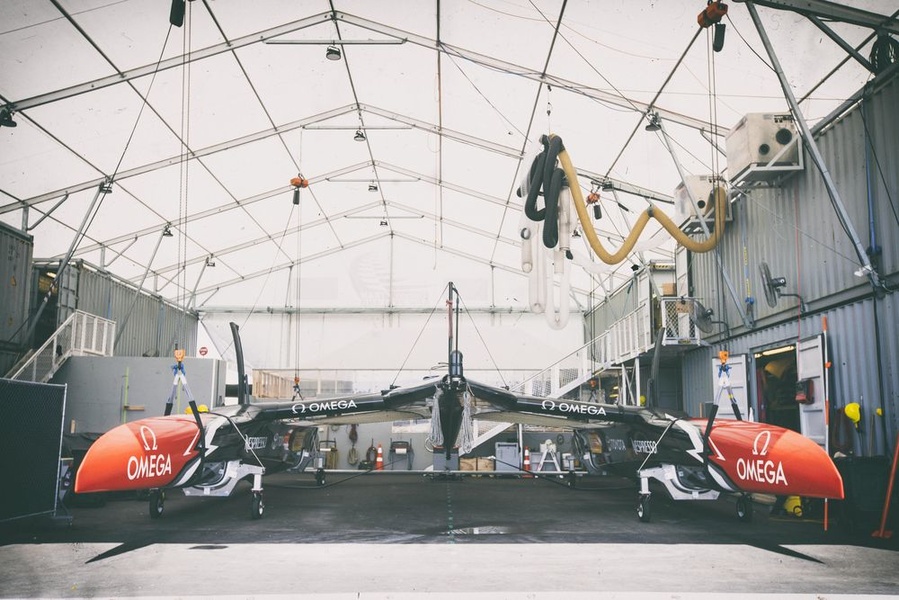
From the beginning it seemed unlikely that the trimaran would go out to sea the next day because it was impossible to speed up the chemical processes. Too much epoxy was used to take risks with a shorter time.
According to the weather forecast, the wind was expected to be 25 to 30 knots and the race committee was planning to decide whether the competition would be held today, by 11 am. Initially, it was not windy enough to cancel the race, but the decision was postponed to 13:00.
While work on the boat and wings continued, everyone understood that if the race had taken place that day, Land Rover BAR would have received two wins without competition.
The long term weather forecast was very unpredictable and there was a good chance that the wind would be too strong for racing in the coming days. Had the New Zealand team not got off to the start, BAR would have won the tie-break race awarded to the winner of the last race.
At 13:30, the decision finally came: no racing. Now the yachting crew could do more thorough repairs, and the yachtsmen and shore crew, who worked continuously, could rest and tidy themselves up.
The effort spent in the last 36 hours to resurrect the boat strengthened the team's determination. The team really got stronger and better. There were no individuals here. It was one team with one goal, and everyone was dedicated.

